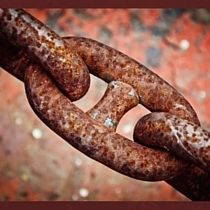When Rust Strikes

When Rust Strikes
You know the rust that clings to all your favorite things, such as your bike, car, or maybe even the swingset? We all know that the moment you see that orange-ish brown substance, it only goes downhill from there – much like the movie The Blob. However, the first step in pinpointing where rust comes from is recognizing that what these possessions all have in common is that they’re metal-based.
Atmospheric corrosion and metal go together as well as fire and ice, which is to say not at all. A large portion of a manufacturer’s job is factoring in the possibility of corrosion, especially when metal-based material is involved. If this isn’t taken into account, then rust can take over the product, significantly lowering its lifespan.
Atmospheric corrosion is the deterioration and destruction of a material and its vital properties. This is due to electrochemistry as well as other reactions caused from the atmosphere surrounding the material. In the high pressure gas industry, this is a major concern as the steel or iron parts are vulnerable to a low-level electrical current that can accelerate atmospheric corrosion. From there, rust and degradation can wear down the part sooner rather than later.
When it comes to high pressure gas parts, in severe circumstances, the presence of atmospheric corrosion has the potential to lead to gas leaks or accidents. One way in which manufacturers reduce such possibilities is in the decision to create either insulated or non-insulated products. While insulated products are more protected from atmospheric corrosion, they initially cost more to produce. The decision of which path to take deeply depends on geological factors, such as coastal applications.
There are many other methods, besides insulation, utilized in protecting high pressure gas components from the effects of atmospheric corrosion. At A.Y. McDonald, we make a conscious effort to acknowledge this in the creation of our natural gas distribution products. This would include sacrificial coating options that delay the onset of rust, such as:
- Zinc coating
- Powder coating
- Two part epoxy paint
Judging by the rust you may find on your possessions, the gas industry isn’t the only one affected but prevention is taken a lot more seriously in our industry. After all, a little rust on your children’s swingset pales in comparison to a completely corroded natural gas pipeline. Knowing this, gas companies annually spend billions of dollars to limit any potential atmospheric corrosion.
It’s okay if your knowledge of atmospheric corrosion is a little rusty because A.Y. McDonald, and the rest of the natural gas industry, has it covered!

